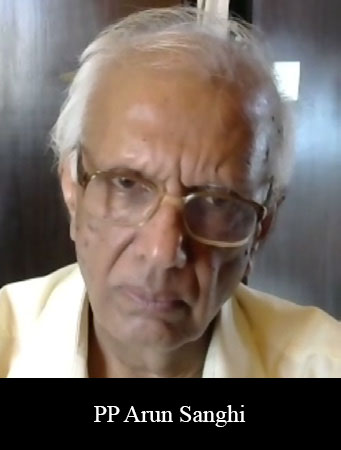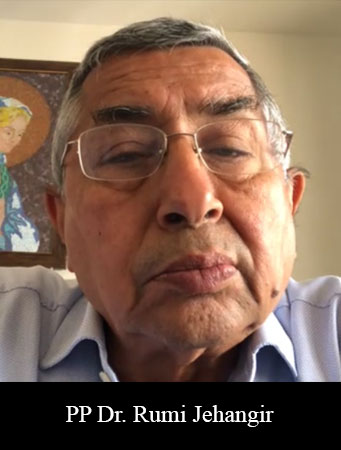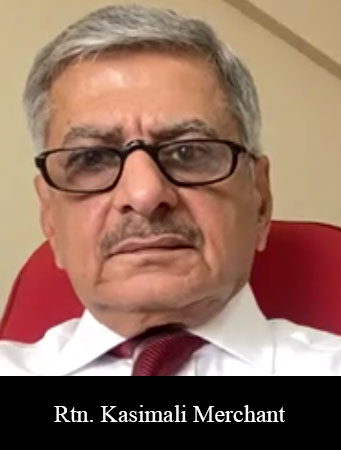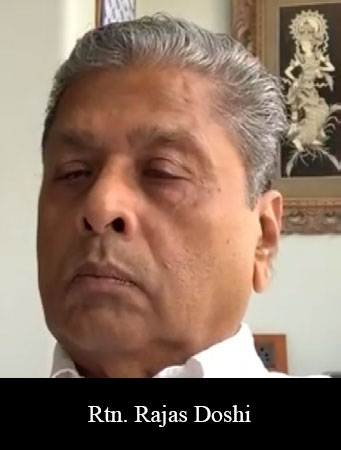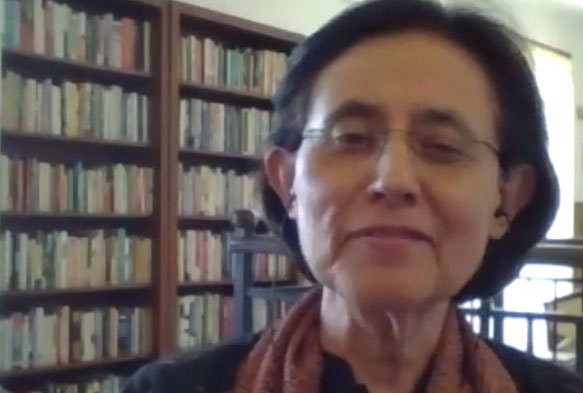
Vinita Bali, Chair, Global Alliance For Improved Nutrition, On Why Nutrition Matters
THERE ARE ABOUT 7 AND HALF BILLION PEOPLE IN THE WORLD TODAY; ABOUT ONE-THIRD ARE OBESE OR OVERWEIGHT AND ANOTHER 900 MILLION PEOPLE, APPROXIMATELY, ARE CHRONICALLY HUNGRY. IN THE SENSE THAT THEY DON’T GET EVEN THE MINIMUM CALORIES FOR SURVIVAL.
Out of those 900 million people, 200 million lived in India. So, we are the largest collection of people who sleep hungry, who don’t have enough calories to meet our basic needs and, in this, I am not including the micronutrients or vitamins and minerals which each of us require to lead a healthy and productive life.
We should care about nutrition because it is a human condition. We should care because it is of the people of our community and society. We should care because it has an economic cost associated with it and the World Bank estimates
that India loses almost 1-2% of its GDP every year as a result of low productivity where the underlying cause is poor nutrition.
There is another significant cause of nutrition and that is in the lives of our children and, largely, women. When we looked at the Global Human Index that takes factors like life expectancy, per capita income etc., into account, India ranks 94 out of the 174 countries. All our neighbours are actually ahead of us. When we look at gender equality, India ranks at 122 out of 162 countries. In fact, India will miss its Global Health Targets for 2025 at the rate of which we are going and not by two years, we are going to miss it by decades. The reason for this also is that one out of every three children born in India is born under weight and that sets you up in a way for a challenge for the rest of your life.
There are two significant events that occurred in the world of nutrition that changed forever the way doctors, nutritionists and people in the development sector thought about nutrition. The first was a study published in 2007 which established the irreversible link between nutrition in the first 1000 days, which is from the conception to the second birthday, and an individual’s physical growth and cognitive development. You cannot make up for it for the rest of your life. Its manifestation is people in India are very thin, not tall… one-third of the world’s stunted children live in India, that is about 50 million, while half of the world’s wasted children live in India and in India I am talking of 45 million stunted and another 30 million wasted children. We talk about India and its human dividend – and I don’t want to sound pessimistic – but unless we change the nutrition trajectory, this is not going to be human dividend for India. In fact, it is going to be a huge human liability.
About 70% of school-going children in India are anaemic. These are not necessarily poor kids – these are kids that go to school in cities like Bombay. About 50% of women in India are chronically anaemic – this is not the shape of an economy or society that has aspirations of becoming a US$ 5 trillion economy or being an economy that really matters in the world. If we put human development on the back burner and assume that economic growth will take care of all the things that we do in human development, we are mistaken.
We have examples of states in India where economic growth is significant but that did not trickle down to an improvement in human development conditions that preclude the occurrence of stunting or wasting or anaemia or so on. In fact there was a very interesting study done by IMRB in Mumbai in 2017 which showed that 70% of the population of Bombay is protein-deficient. This included 65% of people who were non-vegetarian and about 84% percent of people who were vegetarian. So, some people are consuming adequate number of calories which are the macro-nutrients which are our cereals and carbs and proteins and so on, while several of us are significantly under-nourished when it comes to the micro-nutrients which are vitamins and minerals. This is referred to as hidden hunger and unless each of us get our micros and macros, we can’t live a healthy productive life I think covid has centre-staged it, suddenly everyone is talking of immunity. Immunity is nothing but good nutrition that enables us to withstand any infection that we might be exposed to. So, enough said about why it is essential for us to look at it from a human point of view as well economic point of view. A 2% loss in GDP when we are looking at GDP anywhere between US$ 2.5-3 trillion is a lot.
There is another tragedy that affects India and that is post-harvest loss. In other words, bananas being plucked from the trees, apples that are being harvested. Wheat, rice etc, the estimate is that between 35-40% of what India produces goes to waste because we have a poor supply chain.
If I had to look at it from a Rotary or Inner Wheel perspective, my thought or suggestion for your consideration would be that wherever you work with women and children, whether it is education or any other sphere other than let’s say health care and nutrition, please do include a nutrition intervention because you cannot send hungry kids to school and expect them to learn, it will just not happen. Look at the things that we keep talking about: a class 7 student in India can only do class 2 Math. It is not necessarily because the teachers are terrible or the students are terrible, it is simply because those students did not have access to even adequate nutrition to create measures of cognitive understanding and cognitive development in addition to their physical growth.
Wherever you are running programmes, if the emphasis can be on nutrition in addition to everything else, it would be great.
When I was in Britannia, there were two things that we talked about: increase the reach of nutritious food to as many people as possible, whether it is working supplementing the mid-day meal or working in areas where you have your programmes. The second, from an industrial point of view, is two things; as apart of CII National Committee on Nutrition, we work with the UNICEF and several other people on ‘work place nutrition’. If you have an office or factory that has been serving meals to people, several nutritious recipes have been developed by nutritionists and chefs which are whole, balanced meals. These is a programme called Impact for Nutrition that has wonderful materials to raise awareness about nutrition, educate employees about nutrition and see what you can do in your own cafeterias and canteens.
If each of us want to look at all the people who are in our sphere of influence, people who cook for us, our drivers, gardeners and all, and even if we were to take care of their nutritional needs, apart from the work that we do as Rotarians, and if we can simply start impacting these communities and society at large, it will make a difference because even if the government has established a structure, it is the implementation within that structure that has left us wanting and after so many years of this structure being in place, it still puts India in the bottom five of nutrition and health, human development etc. There is a lot of work to be done.
There is another factor in India which goes against women because of cultural issues. Biologically, infant girls are stronger than infant boys. That is just how it is. In India, within 4-6 months it completely turns. A woman who gives birth to a girl child lives on a diet is restricted by her own family. Her ability to feed her child is significantly reduced. Adolescent girls are worse off because their nutritional needs become almost the last priority as do the nutritional needs of women in the house and that creates a vicious cycle which becomes an inter-generational cycle of under-nutrition and malnutrition. 50% of under-nourished girls get married even 18, start producing children early and that is the reason why one of every three children in India is born underweight.
If we address it with conviction and knowledge, over a period of time, nutrition outcomes can and must be changed.
ROTARIANS ASK
Isn’t population our problem?
No, we are almost at the replacement of population which is that the population rate of people born replaces the people who die, so the absolute population doesn’t increase. Our population is very significant, but it is not an issue in this case. Think of it this way: India is exporting rice and so much of food, but we still import edible oil. There is no reason for India to spend about 40 billion importing oil. Our priorities are somewhat skewed.
We grow more food but waste 40% of it. The wastage that happens in our systems – this is where Rotarians and Inner Wheel members can work with the Anganwadis and make a big difference.
Is there any complete food, packaged meal where you can say that you can get everything in that meal?
Diversity in diet, as they keep saying, how much colour you have on the plate, the micro-nutrients, proteins, vitamins and minerals… Eat diversity, with a diverse palette that creates nutrition and immunity.
What will be the cost per child per month so, that we can give them adequate nutrients, should it also be given to the mother, and if we buy Britannia biscuits from the company will it be a subsidised rate rather than what it is at the retail?
Food fortification is one of the most cost-effective ways of getting vitamins and minerals. It costs between 10-25 paise a litre to fortify one litre of milk. I remember we were giving Rs 4 biscuits where the fortification of one biscuit cost Rs. 1.20 per child per day.
When Britannia ran this programme, we worked with Nandi foundation and other people supplying hot cooked meals to schools. We also did a special formulation with biscuits working with the paediatricians because the level of micronutrient fortification you get in commercially available products is lower because they cater to our needs as well as the vulnerable population. So, that will have to be a specifically designed programme and there it is not just the biscuit. If today you are giving rice, rice blends itself to fortification very nicely because you can mix fortified kernels within the rice itself. There is a very good company, DSM, which makes this rice fortification and they sell a product called New Shakti, a mix that you can sprinkle on your food. Micro-nutrients are something in addition to the macro nutrients, so, we need the proteins and carbs and all other nutrients.
Have you seen a link between poverty level in India and across the world and malnutrition? If we have so much surplus grains, is it the distribution pattern or method that is not helping our nation to get out of malnutrition?
It is feeding problem really. All the post-harvest loss happens in storage and logistics. How many times we have seen photographs of FCI godowns where wheat and rice is sorted and there are mice nibbling away all that.
The second is the supply chain, a lot gets wasted in transport.
Third is a focused leakage in the system where because of lack of people with integrity who just syphon off the food. I have seen what is meant to be given to the PDS. I have visited 150-175 schools all over India looking at the mid-day meal and the quality of that meal varies depending on where you are. I have seen meals where the dal is literally like water, because the government gives you a certain budget for your dal which the school or organization is supposed to buy. That gets syphoned off, they add water to the dal, curry. That is where all your work can be clubbed on the ground with people directly involved, that is where this leakage can be stopped, it can make a huge difference.
There is definitely a link between poverty and malnutrition and a greater link between urban poverty and lack of nutrition because it is the lack of access to nutritious food and when I am talking of nutritious food, don’t think of the packaged food at all – there are vegetable and fruits which are exorbitantly priced and which are not reachable. So, yes there is a link between poverty level of under-nutrition, however, lack of poverty doesn’t not ensure good levels of nutrients.
In fact some students in best of schools are found malnourished not under-nourished which means that they get enough calories but not the right calories, there is deficiency of vitamins and minerals.
One of the key findings is the deduction in breast feeding and colostrum that has become rampant and this could be the influence of western media, packaged food, introduction of powdered milk etc, so, if you have to address the root cause of under nutrition in India and to prevent the cycles of this, behavioural change is necessary at the grassroot level.
The latest NHFS data shows an increase in breast feeding and in rural areas there is no question of buying powdered milk and all because a large number of them cannot afford those. The issue is more basic as you point, if the adolescent mother who is not in good health and you cant do it over night, if I am born underweight, I have everything set up against me. This cultural mindset changes and we treat the mothers with necessary and healthy nutrients. The ASHA workers work phenomenally on this. It is necessary to simplify nutrition to make it available to the vast population.
Any suggestions for immunity boosters?
Have a balanced diet with proteins, vitamins and minerals in right amount. There are little things that you require, include Vitamin C to absorb iron, squeeze a Lemon in dal and curry, have calcium and vitamin D on your plate. Invest some time to understand your own nutrition.




